We may not have the course you’re looking for. If you enquire or give us a call on 01344203999 and speak to our training experts, we may still be able to help with your training requirements.
Training Outcomes Within Your Budget!
We ensure quality, budget-alignment, and timely delivery by our expert instructors.

Satoshi Nakamoto launched Bitcoin (BTC) in 2009. It is one of the leading digital currencies, also known as Cryptocurrency. The need for central authorities like the government and banks gets eliminated by using Bitcoins. Instead, BTC relies on Blockchain technology which supports peer-to-peer transactions between users on a decentralised network. Currently, it is one of the most popular digital currencies. Only 21 million Bitcoins exist, and as per Statista’s reports, nearly 89% of it has already been mined till April 2021.
The machines and technology responsible for maintaining the Bitcoin network have undergone significant changes in the past decade. Mining equipment is an essential part of this development and has played a crucial role in increasing the popularity of BTC. Bitcoin Mining involves solving complex mathematical problems to verify transactions made in cryptocurrencies. As a result, the people who solve these problems are rewarded with Bitcoins.
This blog presents and discusses different aspects related to Bitcoin Mining.
Table of Contents
1) What is Bitcoin Mining, and how does it work?
2) What is Proof of Work in Bitcoin?
3) Why Mine Bitcoins?
4) Time taken to Mine one Bitcoin
5) Risks in Bitcoin Mining
6) Bitcoin Mining Basics
7) Cost of Bitcoin Mining
8) Why are Bitcoin Miners needed?
9) How to Mine Bitcoin?
10) Conclusion
Join Blockchain Training courses to learn the basics of Bitcoins and Blockchain Technology!
What is Bitcoin Mining, and how does it work?
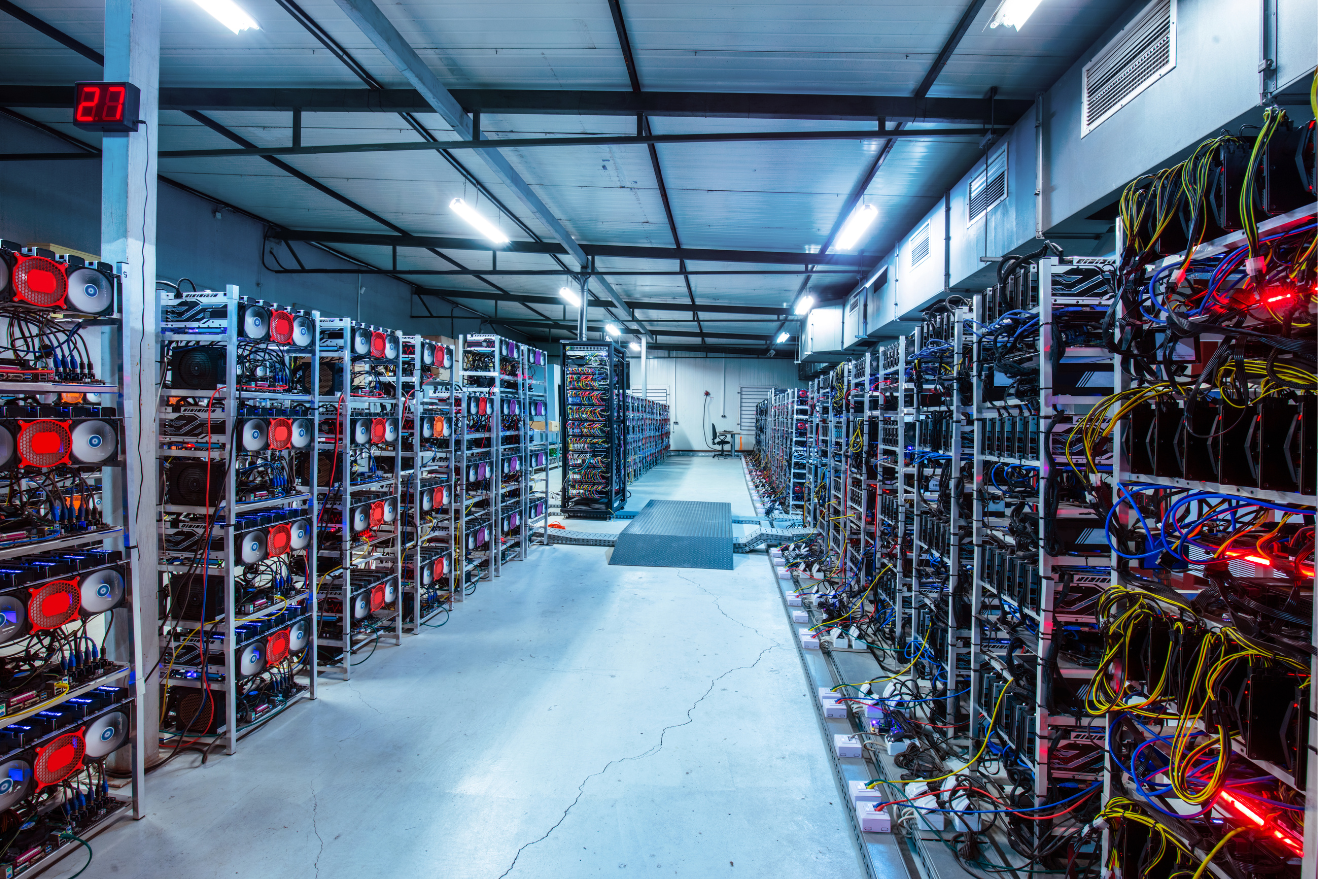
Individuals have to use computing systems to mine Bitcoins. Complex mathematical problems/ puzzle needs to be solved, and the miners are rewarded with Bitcoins if they successfully solve them. Undertaking this process of solving these problems consumes a vast amount of energy and puts significant pressure on computer parts such as Graphic Cards.
The mathematical problems are solved when the miners arrive at the correct or the closest answer to the puzzle. The process of guessing the right number is known as ‘hashing’. It is also known as Proof of Work (PoW). The miners have to make quick guesses at the target hash for which they get innumerable chances requiring a significant amount of computing power. The process becomes complicated when more miners join the network.
How does Bitcoin Mining work?
The Bitcoin mining process requires significant power, specialised equipment and computer parts to handle the power. Specialised hardware required for Bitcoin Mining is known as Application Specific Integrated Circuits (ASICs). Acquiring this hardware can be costly. The equipment consumes a significant amount of energy, which has received criticism from several environmental groups. Due to this, the miners' profitability also gets affected.
After successfully adding a block to the Blockchain, the miners are awarded 6.25 Bitcoins, the current BTC reward amount. The reward of mining is cut in half every four years or after every 210,000 blocks. At the time of the launch of Bitcoins in 2009, the reward was 50; in 2012, it was 25. This way, it has been reduced to reach 6.25 Bitcoins.
Is Bitcoin Mining legal?
Currently, cryptocurrency mining has become a leading means of earning money for many worldwide. While Bitcoin Mining is illegal in countries such as Pakistan, China, and Egypt, it is legal in the UK. However, miners must pay customs fees when importing equipment such as high-powered computers and graphic cards. In addition, they also have to pay income tax and social security on the money generated from the mining.
From time to time, the UK government has tried to regulate the market and process of mining Bitcoins. The Financial Conduct Authority (FCA), Her Majesty's Revenue and Customs (HMRC), and the Bank of England (BoE) have all developed guidelines to regulate Bitcoin and its mining in the country.
Gain in-depth knowledge of Cryptocurrency and how to trade with the Cryptocurrency Trading Training course.
What is Proof of Work in Bitcoin?

One of the main reasons for the development of Cryptocurrencies was to decentralise the process of validating transactions. In digital currencies such as Bitcoin, no intervention from the government and banks is required. To accomplish the goal of decentralisation, a way of verifying the transaction was needed without interference from any financial institutions. The solution to this was provided by the concept of Proof of Work (PoW).
Understanding Proof of Work
The PoW is described as adding new blocks of transactions to a cryptocurrency's Blockchain. In this process, a hash (a long string of characters) is generated that matches the target hash for the current block in use. The Crypto miner whose guess is correct or is close to the hash can add a block to the Blockchain and, in turn, are rewarded with Cryptocurrency such as Bitcoin.
The BTC was the first currency that introduced the concept of PoW to Cryptocurrencies. The PoW is known for its high-grade security but is infamous for inefficiency and negative environmental impact.
The PoW model is a consensus mechanism used to confirm and record all transactions related to Cryptocurrencies. In the PoW model, every transaction block has a particular hash. To confirm the block, a miner has to generate a target hash less than or equal to the block. To do this, the miner must quickly complete the calculations to solve complex mathematical puzzles. The miner aims to be the fastest of all the other miners to earn Bitcoins as a reward.
How does PoW verify a Crypto transaction?
The PoW is a system that requires a significant effort to prevent using computing power for malicious purposes like sending spam emails or launching denial of service (DoS) attacks. The concept was then adapted to secure the digital money based on the idea of "reusable proof of work" using the SHA-256 hashing algorithm.
The PoW works by validating the transactions on the Blockchain. PoW is useful in mining cryptocurrencies like Bitcoin because it eliminates any chance of double spending. Further, it also keeps a record of all the transactions. The BTC and its transactions are based on the SHA-256 hashing functions. It is used to validate and confirm transactions and to issue new Bitcoins in the network.
Preparing for a Job Interview? Check out our Blockchain Interview Questions!
Why Mine Bitcoins?
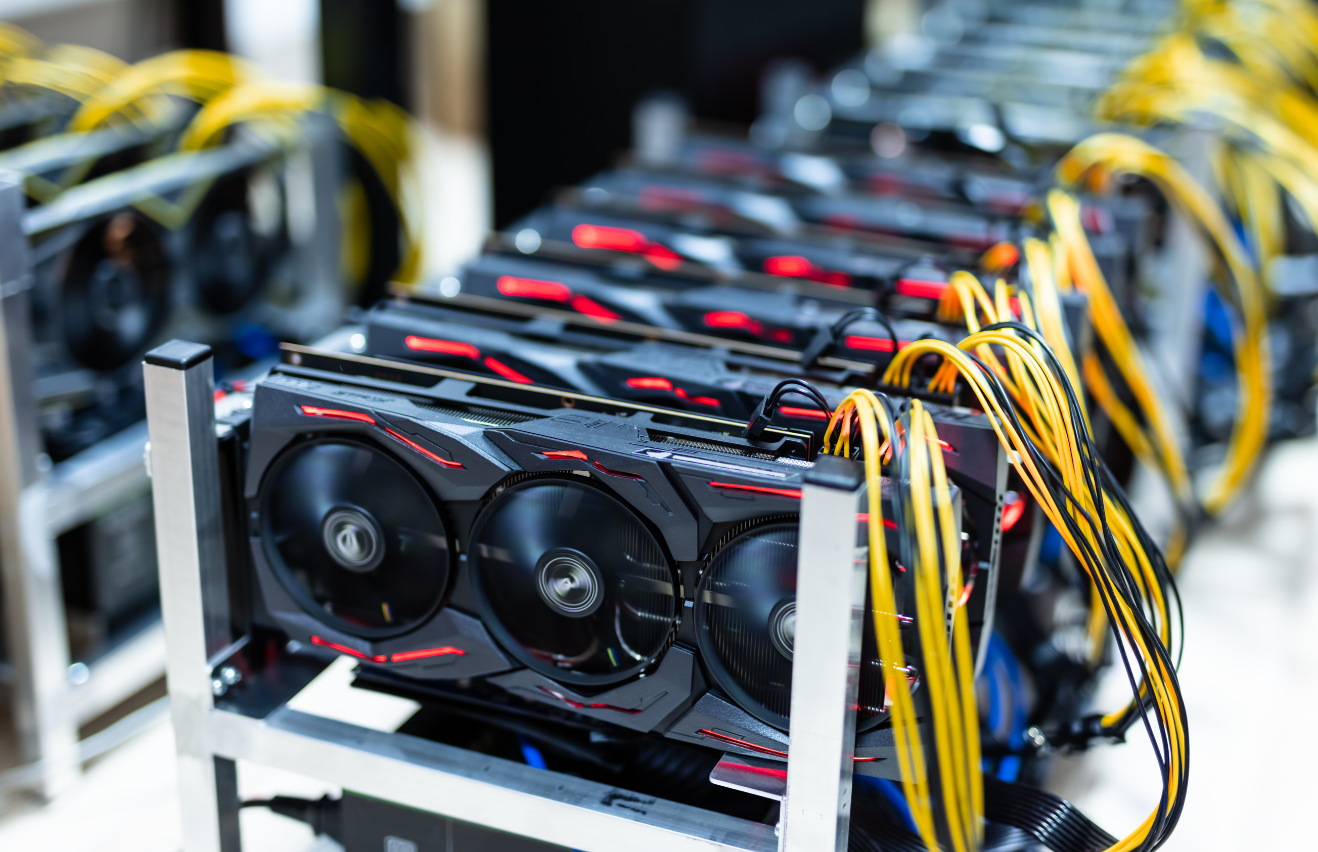
Apart from becoming a source of income for Bitcoin miners, cryptocurrency also provides extensive support to the Blockchain ecosystem. The only way to generate new BTCs is by mining them.
When Bitcoin was launched, it was circulated through the genesis block (the first block created by Satoshi Nakamoto). Post this; every Bitcoin is generated and released after mining. The Bitcoin Blockchain network would have existed if the miners were not present. However, it would have been unusable because no new currency would have been minted.
Another reason to mine Bitcoins is to earn and maximise profits for the miners. Today, the price of Bitcoins is high and buying Cryptocurrency is expensive. By mining Bitcoin, miners can maximise their earnings. Since only less than two million Bitcoins are left out of the limit of 21 million, their prices will increase. Due to this reason, mining Bitcoins can be beneficial and profitable for the miners.
Bitcoin Mining is necessary because if they are not mined, then fraudsters can simultaneously send the Cryptocurrency more than once. They can do this because no one will validate the transactions. Miners get Bitcoin as a reward for solving complex puzzles and validating transactions on the Bitcoin Blockchain network. The mining process reduces the chances of such fraud and increases the confidence and trust of miners and users on the Bitcoin Blockchain network.
With our Blockchain Training Course, you will learn technologies behind Cryptography, Bitcoin, Ethereum, and others.
Time taken to mine one Bitcoin
The creator of Bitcoin, Satoshi Nakamoto, designed Blockchain network to allow for a block to be mined every 10 minutes. Further, to maintain this rate, the creator had to adjust the difficulty level of the mathematical problems. When more miners try to solve the puzzles, the difficulty level will increase and vice-versa.
The time for mining Bitcoin also depends on the type and quality of hardware and systems used by the miner. The latest and most sophisticated mining equipment can handle the load put on by the network and quickly solve the problems, thereby earning Bitcoins for the miner.
In addition, the time taken to mine Bitcoin is proportional to the miner's decision to join a pool or mine solo. More time is required for solo mining, while the time taken to mine Bitcoin in a mining pool is less because all miners join their resources for better equipment.
Bitcoin Mining Basics
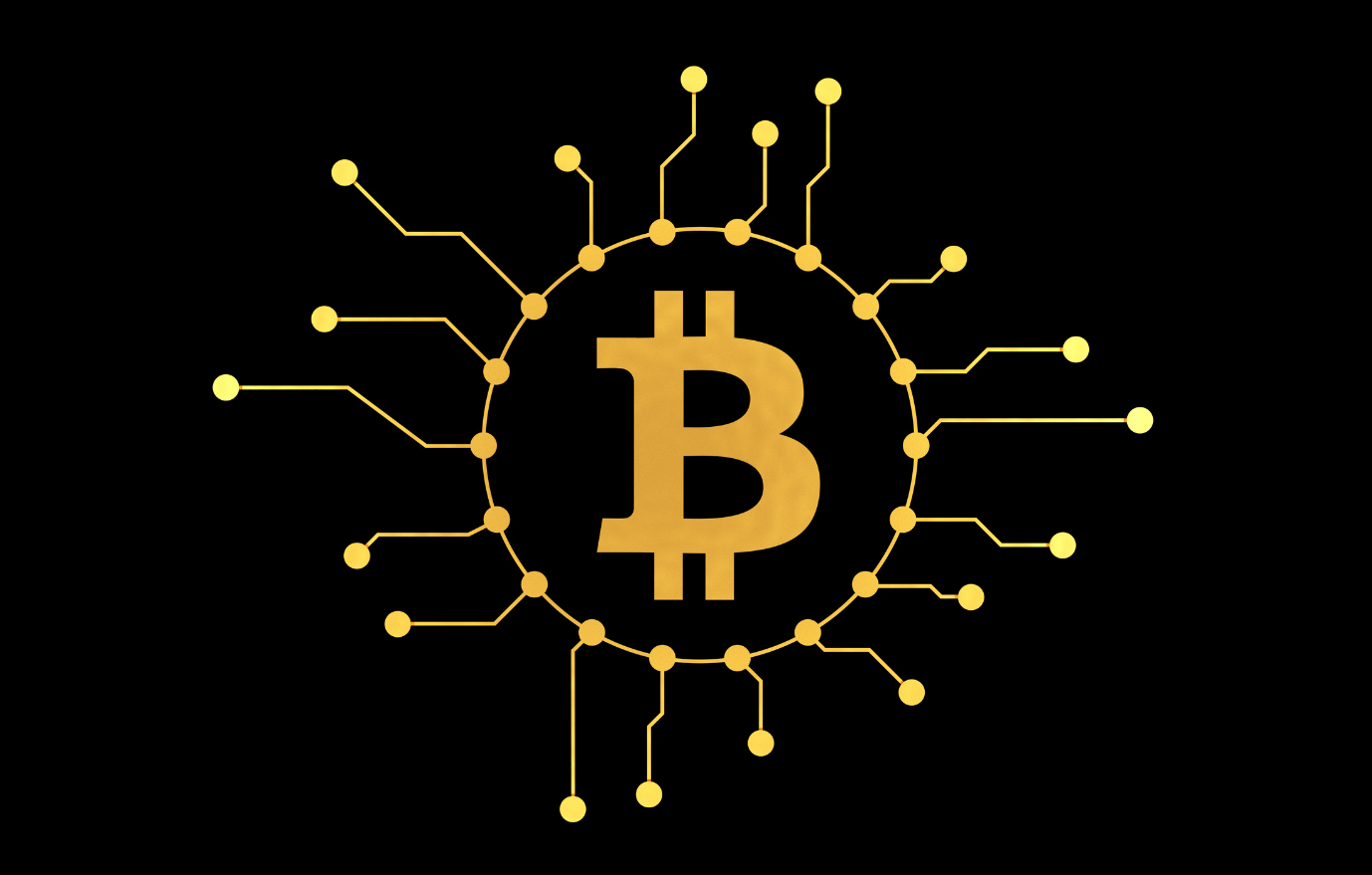
Recently, Bitcoin Mining has become a popular means of earning cryptographic currency. It has also emerged as a source of secondary income. The digital currency has matured over the years, and due to this reason, mining it has also become challenging. In the early days of mining cryptocurrencies, users could mine with their personal computers. But now, the mining process has become so complicated that it requires significant computing power. The math problems have become challenging with the increased number of users.
One of the risks associated with Bitcoin Mining is that users use public Wi-Fi networks to gain power in solving math puzzles. Since miners are using public internet networks, this compromises the security of their mining operations. It opens up the systems to vulnerabilities and leaves them exposed to Cyberattacks.
Cryptojacking is another risk associated with mining Bitcoins and other Cryptocurrencies. Hackers have been infecting millions of websites to gain access to other people's devices for mining. Cryptojacking is installing mining software on devices without users' permission. Out of every 100,000 devices, 50 have been a victim of Cryptojacking. Today it is a widespread problem and possesses the power to slow down the user’s computer. These hackers can use all of the resources of the victim's computer for mining purposes, causing the device to overheat and, in the process, destroying it.
The huge upfront cost involved is the most common risk associated with Bitcoin Mining. Miners must invest significant sums to purchase and ready the equipment for mining purposes. Procuring specialised mining equipment is expensive. Sometimes, miners must import such equipment, increasing overall costs.
Another risk associated with mining Bitcoins is the considerable energy consumption and carbon footprint. To mine Bitcoin vast amount of computational power is required, which consumes energy. Due to this reason, the energy bills of miners increase significantly, resulting in a significant financial burden. In addition, consuming more power also means the carbon footprint of the miner will also be higher, resulting in increased pollution and global warming. Bitcoins operate on the PoW method, meaning they consume more energy than other Cryptocurrencies that use the Proof of Stake (PoS) system.
The process of Mining Bitcoins
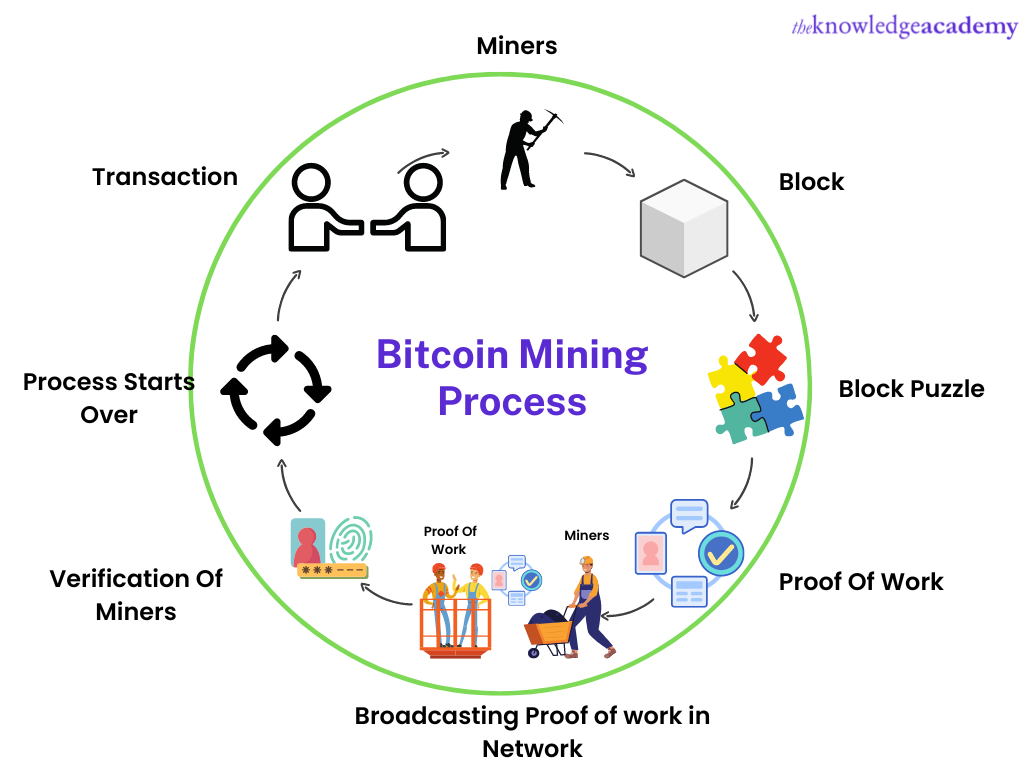
Bitcoins are the most widely mined Cryptocurrency worldwide. It does not exist in the physical world and can only be obtained and used in the digital world. An individual can exchange Bitcoin for real money. However, BTC is accepted in most countries as no authority, such as central banks and government, regulates the currency. Bitcoin miners solve complex problems to validate transactions and receive the cryptocurrency as a reward.
The mining process is complicated as the miner needs access to specialised equipment with excellent processing power. The miners also need to have high-speed internet so they can quickly solve complex puzzles. Next, the miner needs to sign in to a Bitcoin network and approve transactions by accessing the various blocks of data known as hash. After this, the communication of an authenticated transaction goes through numerous systems known as Nodes.
Requirements for Bitcoin Mining
Bitcoin Mining is a complex process that requires thorough technical understanding on the part of the miner and access to a variety of hardware and software. It has three main components as follows:
a) Cryptocurrency Wallet - The Bitcoin Miner first needs a Cryptocurrency wallet. It will store the keys for any token or coins obtained from mining. These wallets have a unique address that enables the miners to send and receive tokens and store them securely. There are several online wallets and even 'cold storage' wallets that do not operate over the internet. The miners must decide which type of blockchain wallet they want because both have unique advantages and disadvantages.
b) Mining Software - Most mining software is free to download and install. They are available for different types of operating systems as well. For Bitcoin Mining, the miner has to choose from various mining software. This software is critical to the overall mining process. Even a minor incompatibility between hardware and software can adversely influence mining operations.
c) Mining Hardware - A Bitcoin Miner has to select from a range of hardware to facilitate and simplify the mining process. Procuring the mining hardware is an expensive affair. In some cases, the miner has to import the equipment. There are several options for mining hardware. For instance, although it is slow, mining can be done with a personal computer. It can also be carried out with highly specialised tools and equipment that provide significant capabilities to the miner.
Want to learn how to use managed Blockchain Network quickly? Join our Amazon Managed Blockchain Training course today!
Cost of Bitcoin Mining
The Bitcoin Mining process is complicated but provides high rewards to the miners. To carry out this mining operation, a miner has to invest considerable resources and bear high electricity bills. Since it is based on PoW, the amount of power utilised is very high. This increases the utility bills of the miner. In addition, the miner also has to bear the equipment and software costs.
During the early days of Mining Bitcoins, miners used their personal computers at home to mine the Bitcoins. However, with rapid technological development, miners now use sophisticated and specialised tools and equipment to mine Bitcoins. The price of hardware and software is a part of the total cost associated with the process of mining Bitcoins.
Mining cryptocurrency is still profitable and a highly lucrative option for miners. Those who mine Cryptocurrency can generate a substantial amount and even trade the coins for real money. Several individuals have made a living from the mining and consider it their primary source of income. Besides investing in hardware and utility bills, Bitcoin miners can earn substantially.
Why are Bitcoin Miners needed?
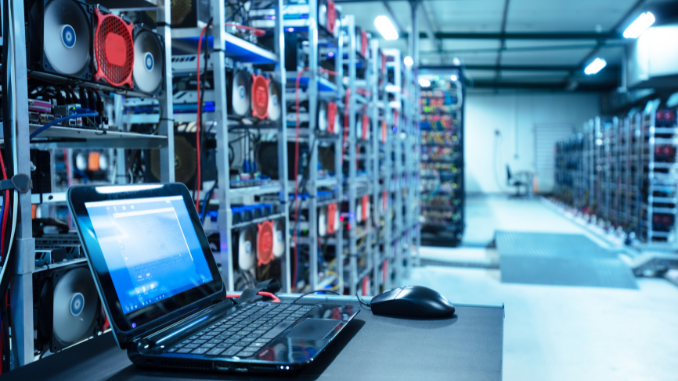
Unlike gold mining, mining Bitcoins results in a service other than finding new Bitcoin. Undertaking this process leads to validating the various Cryptocurrency transactions and maintaining their records.
One of the aspects that explains the need for Bitcoin Miners is that they prevent the situation of double-spending. Satoshi Nakamoto, developer of Bitcoin, embedded the feature of preventing double-spending of the currency with the help of the PoW concept. The Bitcoin miners record and validate the transactions, which are then added to the Blockchain in blocks. The role of double-spending is crucial because it is similar to counterfeiting.
When a miner validates the transaction, the same currency cannot be used to make other payments. To ensure there is no counterfeiting or double-spending, the inventors of Bitcoin designed and added a system of network interactions and protocols that check the transfer of Bitcoins against a public ledger. With the help of this system, a cybercriminal cannot resend the already spent Bitcoins for another transaction because the miners have validated the first transaction and added it to the public ledger.
Another way to understand the importance of Bitcoin miners is that their actions build a secure Blockchain network. Bitcoin Miners work together to secure the transaction network. The more miners there are, the more chances to secure the network. If the network is secure, there are minimal chances of any fraudulent activities with the Cryptocurrency. A secure network will attract more users to carry out different transactions and use it in their daily lives.
Earnings of a Bitcoin Miner
After every four years or every 210,000 blocks, the reward of Bitcoin Mining gets cut in half. In 2009, when Bitcoin was launched, the reward for mining was 50 BTC which fell to 25 BTCs in 2012. The current reward is 6.25 BTC which will get reduced to 3.125 BTCs in 2024. However, the real monetary value of Bitcoin varies on a day-to-day basis.
Due to this reason, determining the exact earnings of a Bitcoin Miner is difficult. The current reward of 6.25 BTC still means a lot of money for the miner or user. The current value of one Bitcoin is £15,552. Thus, mining only one Bitcoin will give the miner a substantial reward. However, the miner has to keep in mind that the value of Bitcoin is volatile. It loses and gains value within a short time. Many experts believe that Bitcoin's value will increase dramatically in the near future, boosting the miners' earnings and making the mining process profitable.
There are only a few million Bitcoins left to be mined. Join Bitcoin and Cryptocurrency Course to understand how Bitcoins work and how you can mine them.
How to Mine Bitcoins?
Here we have discussed some of the several methods available to Bitcoin Miners to mine BTC:
a) Application Specific Integrated Circuits (ASIC) Mining - These computers have been designed to serve only one purpose - to mine Cryptocurrencies like Bitcoin. It is a highly effective means of mining cryptocurrencies.
b) Graphic Processing Unit (GPU) Mining - This mining method serves more purpose than ASIC. This method is helpful because a GPU can serve as a lower model of entry in the Cryptocurrency mining world. These are more affordable than the ASICs and can also support standard hardware.
c) Central Processing Unit (CPU) Mining - A CPU is the main part of any computer system. The method of CPU Mining allows the miners to use the idle power of their systems to mine Cryptocurrencies. In the beginning, Bitcoins were mined using CPU power only.
d) Mining pools - This is another method of mining where several miners join their resources to form a pool and mine the Cryptocurrencies. As many miners work together, finding a new block increases. Once the new block is found, these miners share the profit, and thus collectively, they increase their earnings also.
e) Solo mining - It is the exact opposite of Mining pools. Here only one person is involved in the mining process. The single individual bears all the costs and profits of mining alone.
f) Cloud mining - In this method, the miner outsources their computational work to a cloud mining farm. The miner or the user pays someone else to mine on their behalf. Starting the mining process becomes easier with cloud mining because the miner does not have to procure or arrange specialised hardware for mining.
Conclusion
Bitcoin Mining is an essential aspect of digital currencies. It is the process in which miners are rewarded for validating and authenticating the transactions performed on the Blockchain network. After reading the blog, we hope you now understand the process of Bitcoin Mining.
Frequently Asked Questions
Upcoming Business Skills Resources Batches & Dates
Date
 Bitcoin and Cryptocurrency Course
Bitcoin and Cryptocurrency Course
Thu 16th May 2024
Thu 22nd Aug 2024
Thu 7th Nov 2024







 Top Rated Course
Top Rated Course




 If you wish to make any changes to your course, please
If you wish to make any changes to your course, please


